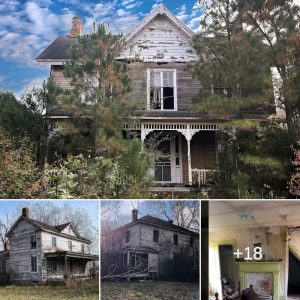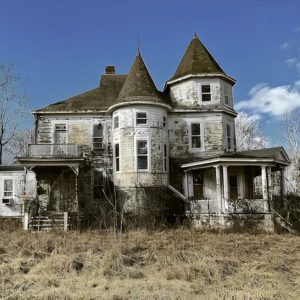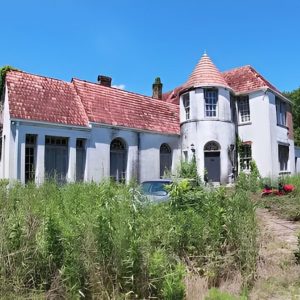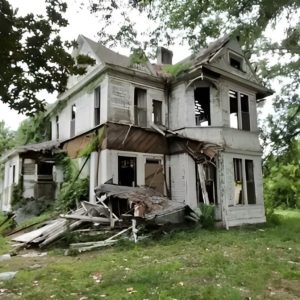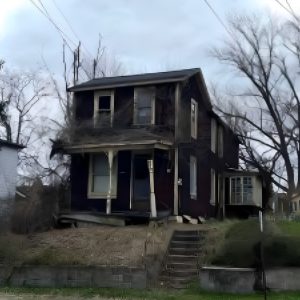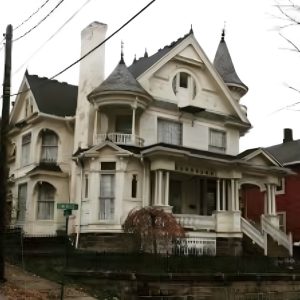There’s no denying it: Queen Anne houses are some of the most striking around. Thanks to their multicolored paint jobs and their abundant decorative details, the homes look like gingerbread houses brought to life. Actually, since the homes are often adorned with prominent turrets and sprawling wraparound porches, it might be more apt to say they look like gingerbread castles brought to life.
But what, exactly, is a Queen Anne house? Queen Anne architecture belongs to a bigger category: Victorian architecture. So a Queen Anne house is really just a specific kind of Victorian house.
What Is a Queen Anne House?
:strip_icc():format(webp)/GettyImages-160808903-c0cbdbd37071417da1b98a35ad8d97f6.jpg)
Queen Anne houses are Victorian-style houses that boast specific features—like asymmetrical exteriors and decorative trim. Queen Anne houses are also known for their wraparound porches, towers and turrets, and multicolored palettes.
Queen Anne houses are known for their dynamic, asymmetrical facades. Think: turrets, wraparound porches, and steeply pitched roofs. And they’re also known for their decorative excess. It’s not uncommon to see a Queen Anne home that’s painted more than three different colors and lined with stained glass windows. And it’s genuinely common to see one that’s loaded with intricate trim and latticework.
Of course, not all Queen Anne houses look exactly alike. But they do share some iconic features that set them apart from other Victorian-style houses—and you can read on to learn more about what defines a Queen Anne house.
There are really two steps involved in identifying whether a house is a Queen Anne or whether it’s something else. First, you need to figure out whether the house is Victorian. This step is pretty easy: If you see a turret, a steeply pitched roof, or a bunch of intricate trim, you’re probably looking at a Victorian house.
But how can you tell whether or not the house is a Queen Anne? This step is a little tougher. After all, there are many different styles of Victorian architecture, and since they share similar features, they can be tough to tell apart.
Keep an eye out for turrets, wraparound porches, intricate trim, and steeply pitched roofs. If you see all of these features at once, you’re definitely looking at a Queen Anne house.
Exterior:
- Asymmetrical facade
- Prominent wraparound porch, often flanked by columns
- Elaborate trim and latticework
- Multicolored paint job (typically featuring three or more colors)
- Turrets and towers
- Varied, steeply pitched roof
- Large windows throughout (including some transom windows, bay windows, and stained-glass windows)
- Heavy wood front door
Interior:
- Single-story living space (if cottage), multi-story living space (if mansion)
- Rooms that open into each other (rather than being separated by hallways)
- Intricate wood trim
- Fireplaces lined with glazed tiles
- Prominent wooden staircases
- Ornate metal door knobs and hardware
The Difference Between Queen Anne Homes and Other Victorian-Style Homes
:strip_icc():format(webp)/GettyImages-160808926-3059a33c84f841bab5f7540d0c2744f8.jpg)
You’re most likely to confuse a Queen Anne house with an Italianate house or an Eastlake house (also known as a Stick Style house)—and unsur
prisingly, both of these are Victorian-style houses. To determine whether a house is an Italianate, look at its roof. If the roof is flat, it’s an Italianate. If the roof is steeply pitched, it isn’t.
To determine whether a house is an Eastlake, look at its facade. Eastlake homes tend to be flatter than Queen Anne homes, so if you see a round element—like a round turret—you’re probably looking at a Queen Anne. (That said, both styles can have octagonal turrets. So you can only make a definitive call if the turret is round.)
And while both Eastlake and Queen Anne homes are lined with intricate trim and latticework, Eastlake homes tend to boast some extra decorative details that Queen Anne homes do not. Along the facades of Eastlake homes, you’ll often find small vertical, horizontal, and diagonal planks. (This detailing is called “stickwork”—hence the name Stick Style.) You won’t find this detailing on a Queen Anne home, so if you see it, you’re almost definitely looking at an Eastlake home. And if you don’t see it, you’re probably looking at a Queen Anne.
The History of Queen Anne Houses
English Baroque Queen Anne Houses (Early 1700s)
The houses we refer to as Queen Anne houses actually weren’t the first Queen Anne houses around. The first period of Queen Anne architecture took place in Great Britain during Queen Anne’s rule (1702–1714). These houses belonged to the English Baroque style, which is known for its imposing facades, elaborate detailing, and relatively pared-down, classical undertones.
Queen Anne houses from this period boast flat facades, brick-lined exteriors, and decorative stone quoins—and unsurprisingly, they look very different from the homes we’d call Queen Anne houses today.
English Queen Anne Revival Houses (1870s)
In the 1870s, Queen Anne houses made a comeback in Great Britain, and these Queen Anne Revival houses looked a little different from the Queen Anne houses that pervaded the early 1700s.
Like the Queen Anne houses that had come before them, English Queen Anne Revival houses were often crafted from brick or stone. But instead of boasting flat, symmetrical facades, these houses were a little more eccentric. Many of them featured asymmetrical facades, corner towers, and large porches.
American Queen Anne Revival Houses (1880s–1910s)
When the Queen Anne style made its way to America, it changed yet again. And while the phrase “Queen Anne house” can mean very different things depending on where you are in the world, American Queen Anne Revival houses are the gingerbread-castle-like houses many of us are referring to when we say Queen Anne houses.
American Queen Anne Revival houses became popular in the 1880s, and they were much more eccentric than the Queen Anne houses that had been built so far. American Queen Anne Revival houses boasted the same asymmetrical facades you’d find in English Queen Anne Revival houses, but thanks to overhanging eaves, prominent towers, and sprawling wraparound porches, this asymmetry became even more pronounced.
American Queen Anne Revival houses further distinguished themselves from their British counterparts with dramatic decorative detailing. British Queen Anne Revival houses boasted some ornate woodwork and stonework. But, since they descended from English Baroque Queen Anne houses, they remained relatively classical and understated.
American Queen Anne Revival houses, on the other hand, took inspiration from the Eastlake movement—a Victorian-style movement characterized by multicolored palettes and intricate trim. This aesthetic influence made American Queen Anne Revival houses even more striking. They were dramatic in form and finish—and a far cry from the English Baroque Queen Anne Houses that characterized the early 1700s.
